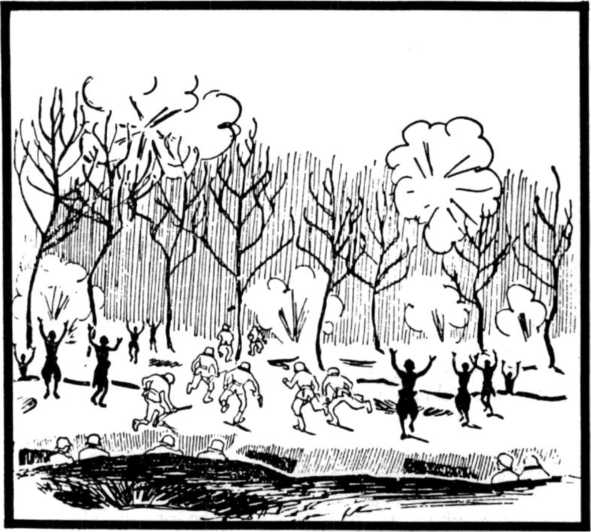On my return from leave, I got the 4th Company which a few days later was to attack on the right flank of the regiment. I took over the company in a reserve position in the Charlotte valley. After a personal reconnaissance of the assembly area and the terrain to be attacked, I held a few rehearsals in the old valley positions and in this manner prepared the company to approach the tough job that lay ahead with complete confidence. I regretted that my command lasted only a few days, but I was too junior to be a permanent company commander.
Before dawn on September 5, my platoon moved up through the communication trenches in a confident mood. The position we took over from a company of the 123rd Grenadiers was being undermined by the French. At various places we could clearly hear the incessant work of the hostile tunnelling squads. We hoped that the enemy would not stop burrowing before the start of the attack. We preferred honest man-to-man fighting to being blown into the air. Three long days passed during which the moles beneath worked without interruption.
At 0800 on 8 September, our heavy artillery and mortars opened fire on the enemy position, some forty to sixty yards in front of us, with approximately the same number of guns and weight of metal that had been used in the barrage prior to the storming of Central. The French artillery of all calibres answered immediately with strong fire against our positions. We huddled together in our flimsy three and four-man dugouts while this furious cannonade raged over our heads.
The earth shook continuously under the violent impact of the shells and a veritable rain of sod, splinters and broken branches was falling on all sides. Husky Argonne oaks were uprooted and came crashing to the ground. We could now hear nothing of the French sappers. Could they have completed their work?
From time to time I dashed through the company sector to see how my men were faring. Now and again I was knocked off my feet by the concussion of shells exploding near our lines. I peeked over the parapet in the direction of the enemy. Countless giant geysers were erupting from the surface—geysers of earth, smoke, fascines, sod, sandbags and timbers. Trees were toppling everywhere and a pall of blue-grey smoke enveloped the enemy rear area.
The barrage was to last for three hours, an unspeakably long time for us lying in that bubbling cauldron. Finally the watch hands reached 1045.
Crouching, the three assault teams slipped from their dugouts and assembled at the start line. Watches were synchronized. As the bombardment lifted, we would go over the top exactly on the stroke of 1100. The engineer squads and the ammunition and materiel-carrying parties arrived, and I pointed out the squad objectives to each squad leader. These objectives were some 225 yards beyond the enemy line, and I impressed upon them that it was necessary to keep to their objective and that elements of the company following us in second line would take care of any outside local resistance. The activities after the successful attack, the consolidation of the gains, the establishment of contact, and the blocking off of sectors were thoroughly discussed.
Meanwhile, under a terrific concentration of fire, all types and calibres of shell were demolishing the hostile position. It was hard to imagine that anything remained alive when the gunners got through. Thirty seconds more! The riflemen crouched in the craters ready to go. Ten seconds more! The last shells struck close ahead of us; and, before the smoke cleared, our three assault teams rose noiselessly from their trenches and dashed for their objective on a front of some 280 yards. The attack moved through the smoke and noise of the battlefield with the same precision shown in the rehearsals of the past few days. A wonderful picture!
Our men paid little attention to the crowds of fear-crazed French soldiers climbing out of the nearest positions with hands raised high and merely pointed them towards our line of departure. The assault squads rushed toward their objectives, and the units following in the second line under the company first sergeant took care of the prisoners.

Attack of September 8, 1915.
I joined the assault team on the right. We rushed forward past enemy trenches and, in a few seconds, reached our objective. Engineers, entrenching squads, and hand-grenade squads followed close on our heels and, up to this time, no one had been hit. Our advance was without the usual accompaniment of cheers and shouts and as a result of this silence we took the French rear positions completely by surprise. These people were convinced that the jig was up and they surrendered without offering any resistance. A machine gun opened up and forced us to take cover. We moved to the left down the trench and established contact with the centre assault team and a few minutes later we were in contact with our left unit and with the adjacent company (2nd) as well.
We worked at fever pitch consolidating our positions for defence and in a very short time the trenches leading toward the enemy were blocked off with sandbags and ammunition and grenade dumps had been established. The French artillery opened up on the area behind us in such volume that we were completely cut off from our jump-off position. French machine guns prevented any movement outside the newly won position and we had no chance of immediate re-supply. The French infantry counterattacked but even though we had a field of fire hardly one hundred yards in width, we had little difficulty in stopping them. Within the positions, violent hand-grenade fights centred around the blocked-off trenches, but there, as elsewhere, the enemy made no gains. The terrain sloped gently toward the enemy, and our hand grenades reached farther than his.
During the attack five men in one of the assault teams were put out of action by an improperly thrown grenade. French fire after we reached our objective caused a total of three dead and fifteen wounded for the company. Supplies of all classes were our next problem. Ammunition, materiel, and provisions had to be brought across open terrain which was constantly swept by French machine guns and artillery fire. A communication trench back to the line of departure had to be dug and we had to establish contact with the unit on our right.
Upon my suggestion, the battalion commander decided to have eighty men from the reserve dig a hundred-yard trench from our position back to the jump-off point. This work was placed under my direction. Our work was fifty yards from the French so I ordered my materiel squads to bring up a large number of sandbags and steel shields. I had learned something from the French on June 30th.
We started work at 2200 although the enemy was still restless and excited and kept up an almost continuous fire illuminated by rocket flares. To get the job done in a single night meant getting under way without delay. To start with, I ordered a sixteen-inch sandbag wall to be pushed out from each end of the still non-existing trench. To build this wall was hell and we formed an endless human chain with each man flat on his back and in this way got the bags out to the wall-builder. Hostile small-arms had no effect on the men behind the bags and in no time the wall stuck out into open space for a distance of fifty feet on each end. Then the supply of sandbags gave out, leaving a gap 200 feet wide. I closed this gap by having men take their armoured shields into the gap and form a skirmish line.
As soon as the individual soldier got to his position, he emplaced the steel shield and began to dig in behind it. Rifle and hand grenades were at hand. This whole movement was accomplished without noise although the enemy fired numerous flares and used all his infantry weapons. The only thing that reached us was rifle fire and that could not penetrate our armoured shields. Even so, the skirmish line was none too comfortable. At day break on September 9th, we had a communications trench six feet deep leading back to our old position. In the course of the night's work we discovered the corpse of a 1st battalion soldier which had lain in this no-mans-land since June 30th.
Just as I hit the hay after a hard day's work, the battalion commander and, hard on his heels, the regimental commander arrived to inspect the new positions. They were pleased with the success of the 9th and 2nd Companies. The assigned objective had been seized. Some officers, 140 enlisted men, sixteen trench mortars, two machine guns, two drilling machines, and one electric motor were in our hands. The joy of the 4th Company over the success was dampened by the death of Reserve Lieutenant Stowe, our liaison officer with the 123rd Grenadiers who had leave orders in his pocket.
Shortly after the attack I gave up the 4th Company again and, for a few weeks, took over the 2nd Company. It was with a heavy heart that I took leave of the 4th Company where I had such an excellent understanding with the troops. In command of the 2nd Company, I spent some time in Crown Prince Fort, a shell-proof shelter and blocking position 160 yards behind the front line. While there I was promoted to first lieutenant and transferred to a mountain outfit which was to be activated in Munsingen. It was hard to leave a fighting regiment in whose ranks I had fought through so many a hard day and to say goodbye to the many gallant soldiers and to the blood-soaked, hotly contested soil of the Argonne. The Champagne battle was at its peak when toward the end of September I left the Binarville forest.
Observations: With the newly acquired company, the attack for September 9 was thoroughly rehearsed. The three assault squads were to advance as soon as the artillery preparation ceased, traverse the nearby enemy position without shooting, and capture the assigned objectives some 220 yards away. Mopping up operations were assigned the company units following in second and third lines.
Contrary to my orders, one assault team used hand grenades during the advance and wounded five of our men. (These were the only losses sustained in the attack proper.) In principle: Do not throw hand grenades during a charge, for our own people will run into them. The surprise achieved was complete. We were past the enemy forward position before he could grab a rifle, and our appearance at the entrance to his rear dugouts must have been regarded as Mephistophelean. The result was a relatively large number of prisoners.
After the attack, we shifted swiftly to defence, this time by using the positions at hand, and we had no trouble in repulsing their counterattacks. Again, after the assault, the company communications to the rear were interrupted for hours by artillery and machine-gun fire. The use of sandbags and armoured shields greatly simplified the job of making contact with the Rear.
Chapter III Positional Warfare In The High Vosges -1916 War of Movement In Rumania 1916-1917




 World History
World History









